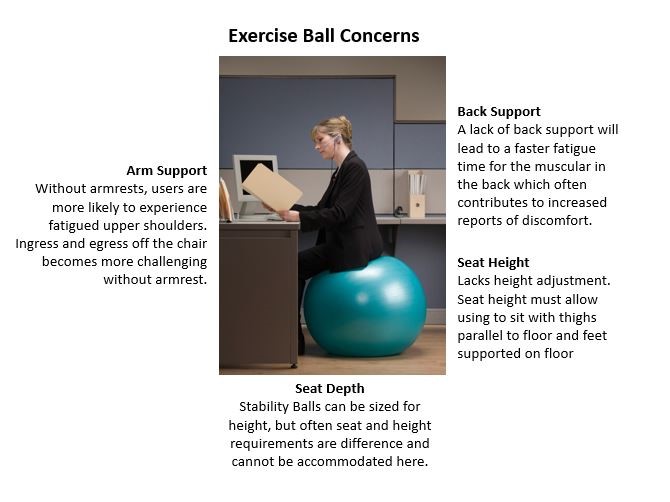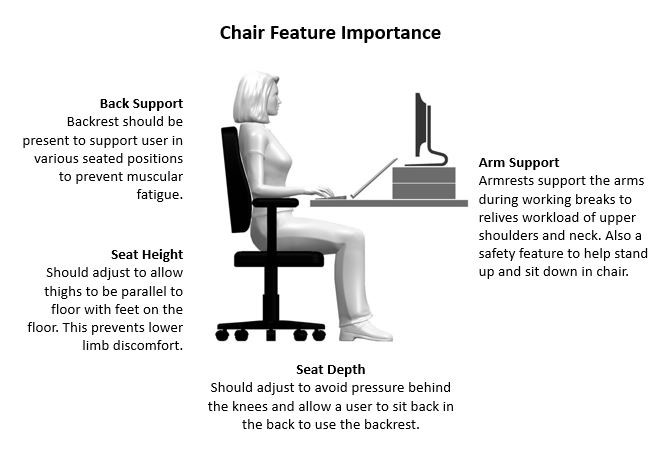Using stability balls in place of an office chair is common in many offices. As Ergonomists, we are often approached by employers to provide advice and policies regarding whether stability balls should be used for seating in the office. This week on the blog, we have decided to outline our view on this topic. We review the importance of certain office chair features, and the corresponding concerns we have over prolonged use of stability balls.
Two common reasons we hear from employees for their choice to use a stability ball are: 1) they are uncomfortable in their chair and want more freedom to move when seated at their desk or 2) it has been recommended to them as a way to increase core strength while sitting throughout the day. Manufacturers market their stability balls as methods to increase comfort and core stability (through increased muscular activity) while working in the office (1, 2). In response to these claims, researchers have begun to look at the effects of using stability balls as chairs during computer use, and they have actually found that, for a 1-hour period, low back discomfort increases during stability ball use, when compared to use of a standard office chair use (3-5). Furthermore, comparisons of low back muscular activity during stability ball and office chair seating either found no significant differences across seating conditions, or if differences were detected they were inconsistent across subjects (3, 4, 6, 7-9).
The widely accepted guidelines on office ergonomics from the International Organization for Standardization (ISO) and the Canadian Standards Association (CSA-International) state that office seating should be designed to provide a stable support which allows a person to move and be comfortable over prolonged periods of time (10-11). In order to accommodate this, the a chair should have a proper “fit”, which can be achieved through appropriately fitted seat height, seat depth, seat width, back support, and arm support. The figures below highlight the importance of chair features and the ergonomic concerns identified with stability ball use.


Some people may still wish to use a stability ball to increase their core strength, therefore we recommend that it is used in a more controlled environment (such as at home or in the gym) in which you can focus on the exercise objectives. Maintaining proper seated posture on a stability ball is quickly forgotten when your job demands become your primary concern.

